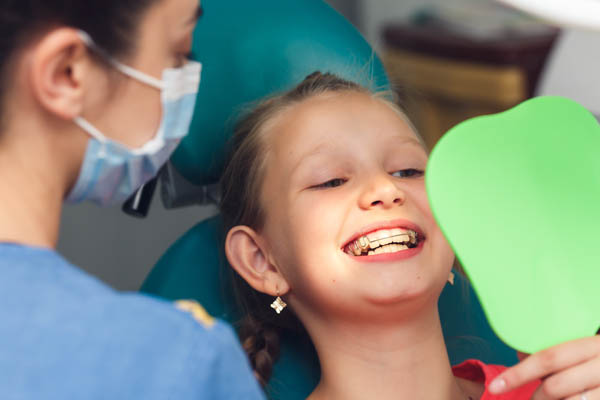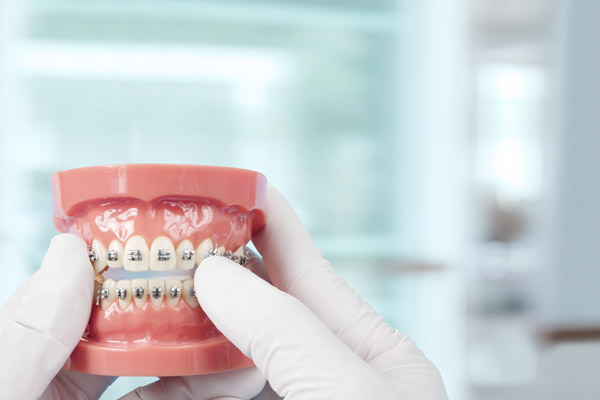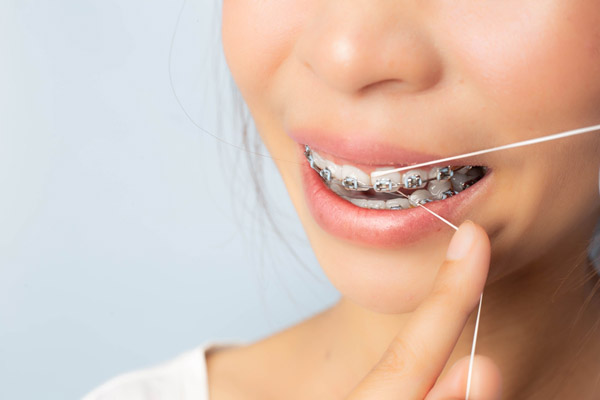The Goal of Early Othodontic Treatment

It is not unusual for an orthodontist to recommend early orthodontic treatment for patients. While the most frequent patients to wear braces and aligners are teenagers, orthodontic care can begin sooner. Every patient’s needs and goals are different, so evaluate what your child’s smile looks like. It could be a good time to visit an orthodontics office and discuss the procedures and care that make the most sense.
Types of orthodontic care available
For centuries, people have been concerned about what their teeth look like. Because a smile is often the first feature others notice, people want to have straight teeth and an aligned jaw. This does not always happen, but there are fortunately solutions. An orthodontist will first evaluate the person’s condition. Depending on the issues, the orthodontist can recommend a variety of treatments.
Metal braces are often the first option. This approach can fix bite dysfunctions, crowding, gaps, and crooked teeth. For more discreet treatments, clear braces or aligners are possibilities. Other orthodontic methods include the use of spaces and retainers.
When to see an orthodontist
Parents should know that early orthodontic treatment can start when a patient is as young as age 7. Often, a dentist will refer a patient to an orthodontist, but a parent may elect to choose one that they are familiar with. A child does not even need to have noticeable orthodontic problems to start getting care. The orthodontist can identify future issues and concerns. Then, intervention can begin to prevent smile problems as well as pain and discomfort.
To prevent crooked teeth
Many people start getting help for their children when permanent teeth come in crooked. However, with early orthodontic treatment, a main goal is to avoid this alignment issue. The first steps are to create enough space in the mouth so that emerging permanent teeth erupt in the right spots. The orthodontist will use spacers to reduce the risk of teeth coming in crooked in the next few years.
To prevent bite issues
Bite problems are common among children. These conditions include an underbite, overbite, crossbite, or open bite. These can hinder the child’s smile cosmetically. Bite dysfunctions can also be painful and lead to oral health concerns. With early orthodontic treatment, the orthodontist can correct jaw growth around age 8 or 9. Then, by the time the jaw fully develops, the bite should be aligned properly.
To reduce treatment length
The treatment period with braces or aligners will differ from patient to patient. This will depend on the issues and their severity. If a child does early orthodontic treatment, the treatment length with these methods will be shorter. Early care allows the orthodontist to identify problems faster and correct them.
Consider early orthodontic treatment for your child
If you have a child at or near age 7, it is time to think about orthodontic care. Let an orthodontist evaluate your child. You can then put your son or daughter on the road to having an attractive smile. Plus, you will not have to worry about a lengthy treatment later.
Are you considering getting early orthodontic treatment in the Belmont area? Get more information at https://belmontsmiles.net.
Check out what others are saying about our dental services on Yelp: Orthodontics for Children in Belmont, MA.
Recent Posts
An increasing number of Americans are opting for teeth straightening to provide a healthy, beautiful smile. Leaving misaligned teeth untreated can lead to other dental problems like tooth decay, gum disease, and difficulty chewing. Orthodontic treatment is beneficial because it can make teeth fit better and create a better bite. It can also reduce the…
You might not be aware of the cosmetic orthodontic options you have to improve your smile, but cosmetic dental restorations can be used to improve how aligned your teeth look. Some orthodontic treatments also provide cosmetic benefits as they improve the alignment of your teeth.Before going any further, we should clarify the difference between a…
One method of plugging a gap between teeth is to use space maintainers. If your child is injured or loses their primary teeth before their permanent teeth have a chance to grow in, he or she risks developing dental problems if the resulting area between the teeth is not filled.In children, primary teeth grow before…
Thinking of going for orthodontic treatment but worried about unsightly metal braces? Read on to learn about the advantages of aesthetic braces. For decades, patients had no choice but to straighten their teeth with unsightly braces with metal brackets and wires. This had a tremendous impact on their self-esteem, and many decided to forego braces…


